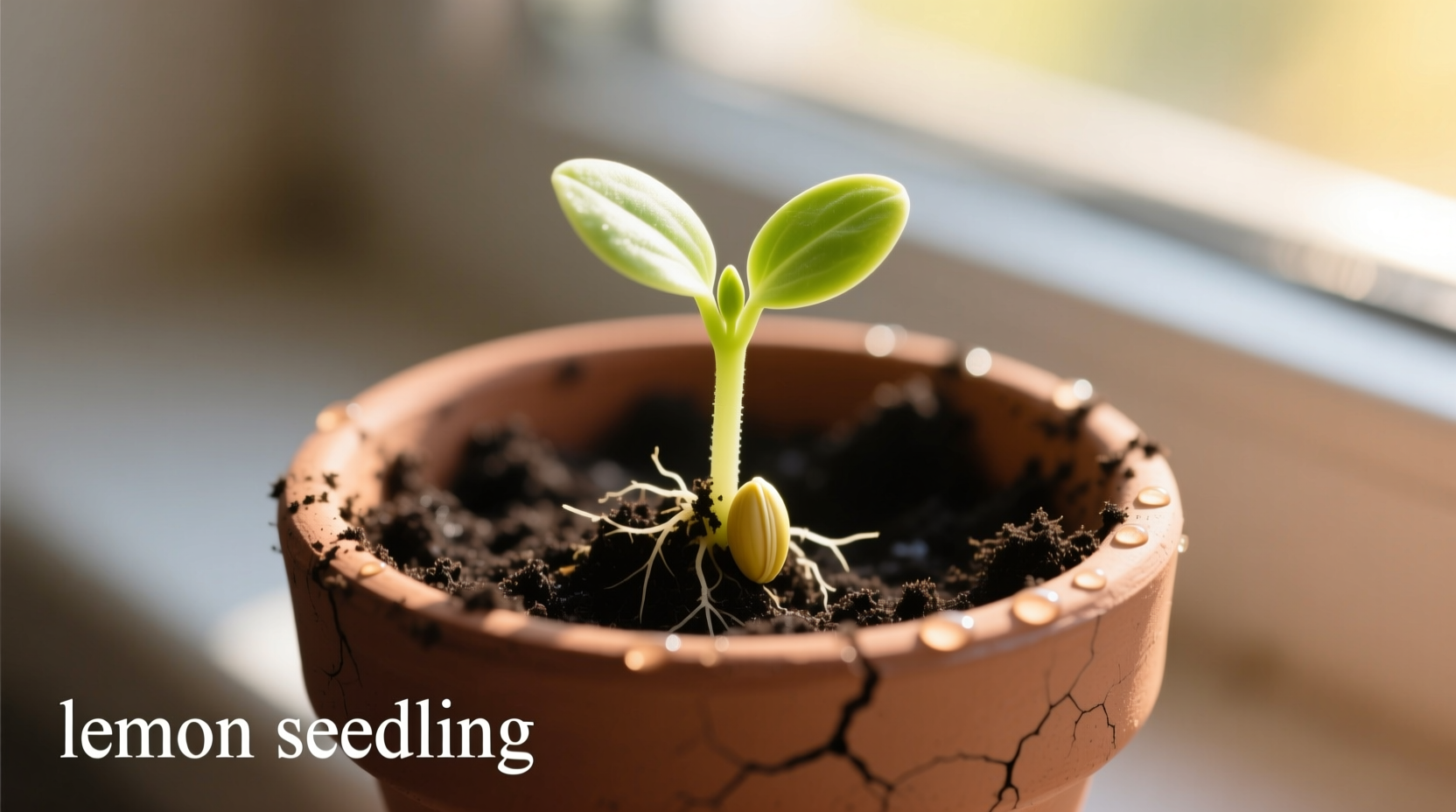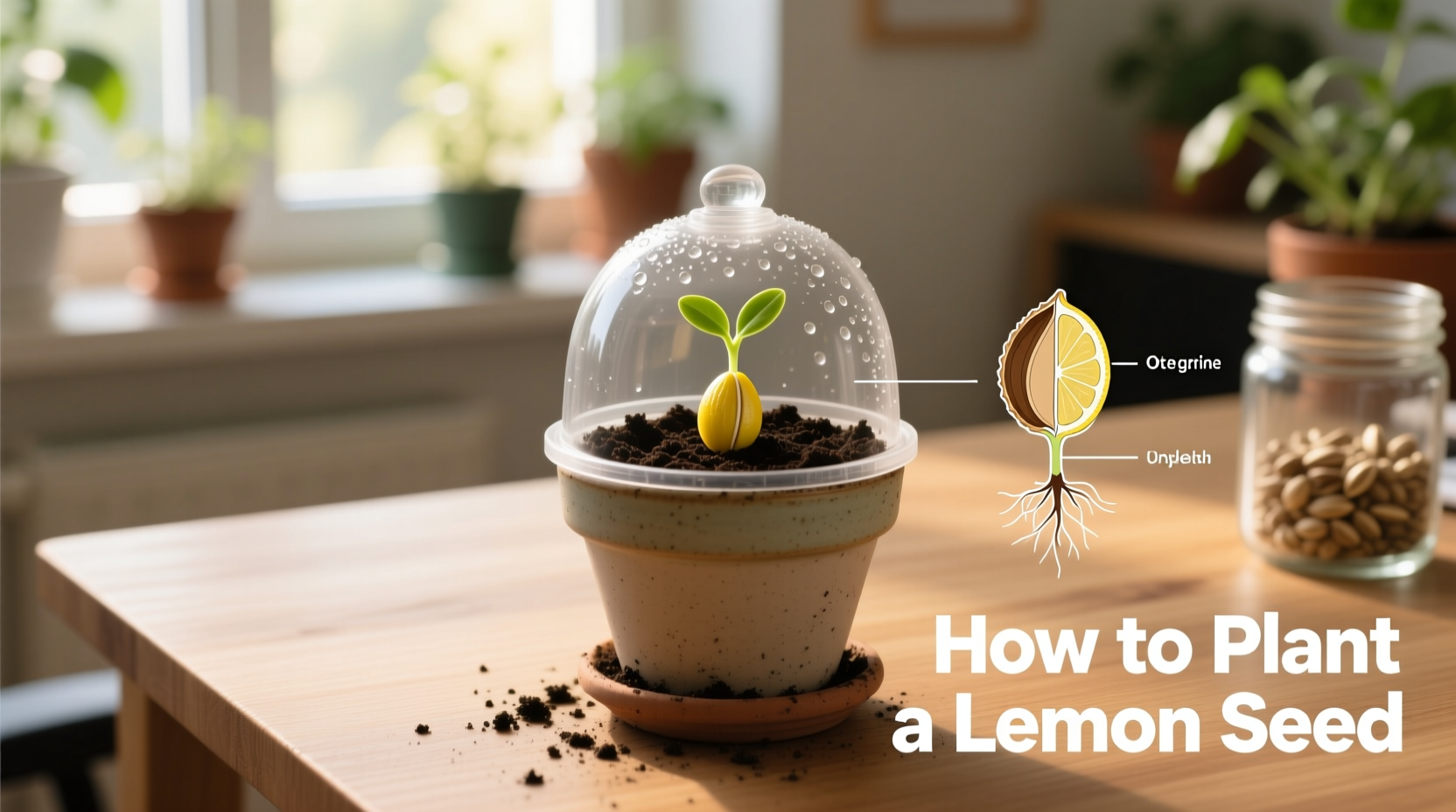Plant a lemon seed by extracting it from a fresh lemon, rinsing off pulp, and soaking in water for 8 hours. Plant 1/2 inch deep in well-draining potting mix, keep soil moist at 70-85°F (21-29°C), and expect sprouts in 2-6 weeks with consistent warmth and indirect sunlight.
Have you ever wondered what to do with that lemon seed you almost tossed in the trash? Growing your own lemon tree from seed is simpler than you think—and incredibly rewarding. Whether you're a beginner gardener or looking for a family-friendly project, this guide delivers everything you need to transform a grocery store lemon into a thriving citrus plant. Forget complicated gardening jargon; we've distilled decades of horticultural expertise into clear, actionable steps that work.
What You'll Need Before Planting
Starting with quality materials makes all the difference in successful germination. Here's exactly what to gather:
- Fresh lemon seeds (from organic lemons to avoid growth inhibitors)
- Seed-starting mix (pH 6.0-7.5, per University of Florida IFAS guidelines)
- 4-inch pots with drainage holes
- Small spray bottle for misting
- Plastic wrap or humidity dome
- Thermometer for monitoring soil temperature
Pro tip: Save multiple seeds from different lemons. Not all will germinate, and citrus grown from seed often produces thorny, non-fruiting trees—but they make beautiful ornamental plants.
Step-by-Step Planting Process
Follow these precise steps for maximum germination success:
- Seed selection: Choose plump, white seeds (avoid dried or discolored ones)
- Cleaning: Rinse under cool water, removing all pulp that inhibits germination
- Soaking: Submerge in room-temperature water for 8 hours (never longer than 24 hours)
- Planting: Fill pot with moistened soil, plant seed 1/2 inch deep pointy-end down
- Moisture control: Mist soil surface, cover with plastic wrap, and place in warm spot
| Germination Stage | Timeline | Care Requirements |
|---|---|---|
| Seed swelling | 24-48 hours | Maintain 75°F (24°C) soil temperature |
| Root emergence | 1-3 weeks | Keep soil consistently moist (not soggy) |
| Shoot appearance | 3-6 weeks | Provide 6-8 hours indirect sunlight daily |
| True leaves | 8-10 weeks | Begin weekly diluted fertilizer applications |
Critical Growth Conditions
Your seedling's survival depends on these non-negotiable factors:
Temperature Requirements
Lemon seeds require consistent warmth for germination. The USU Extension confirms citrus seeds germinate best between 70-85°F (21-29°C). Below 65°F (18°C), germination slows dramatically or stops completely. Use a seedling heat mat for consistent bottom warmth—this simple tool doubles success rates according to horticultural studies.
Light Management
After sprouting, provide 6-8 hours of bright, indirect light daily. Direct midday sun burns tender seedlings. A south-facing windowsill works in winter, but summer requires filtered light. If growing indoors year-round, use a 6500K LED grow light positioned 12 inches above plants for 12 hours daily.

Avoiding Common Pitfalls
Most failed attempts stem from these preventable mistakes:
- Overwatering: Soggy soil causes seed rot. Water only when top inch feels dry
- Poor drainage: Always use pots with drainage holes—terracotta works best
- Impatience: Some seeds take 6 weeks to sprout. Don't discard pots prematurely
- Tap water issues: Chlorine inhibits growth. Use filtered or rainwater when possible
When transplanting to larger pots (at 6-8 inches tall), maintain the same soil depth. Citrus roots dislike disturbance, so handle seedlings by leaves, not stems. Expect slow growth the first year—this establishes crucial root development.
Realistic Expectations for Home Growers
Understanding these context boundaries prevents disappointment:
- Lemon trees grown from seed take 3-6 years to potentially fruit (if they fruit at all)
- Grocery store lemons often come from grafted trees—seedlings may differ from parent
- Indoor trees rarely fruit without professional greenhouse conditions
- Seed-grown trees develop thorns (unlike grafted nursery trees)
The USDA Agricultural Research Service notes that seed-grown citrus typically produces inferior fruit compared to grafted varieties. However, your tree will still provide beautiful foliage, fragrant blossoms, and the satisfaction of growing from seed. For edible fruit, consider air-layering or grafting onto your seedling after 2-3 years.
When to Seek Professional Help
If your seedling shows these warning signs after following proper care:
- Complete leaf drop within 2 weeks of sprouting
- Blackened stem base (root rot)
- No growth after 8 weeks with proper conditions
- Sticky residue or webbing (pest infestation)
Contact your local cooperative extension service for region-specific advice. These government-supported programs provide free, science-based gardening assistance—find yours at nifa.usda.gov.











 浙公网安备
33010002000092号
浙公网安备
33010002000092号 浙B2-20120091-4
浙B2-20120091-4